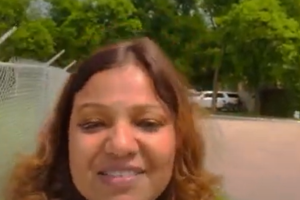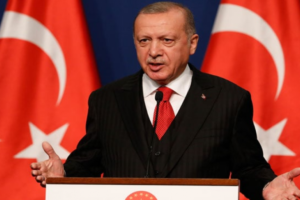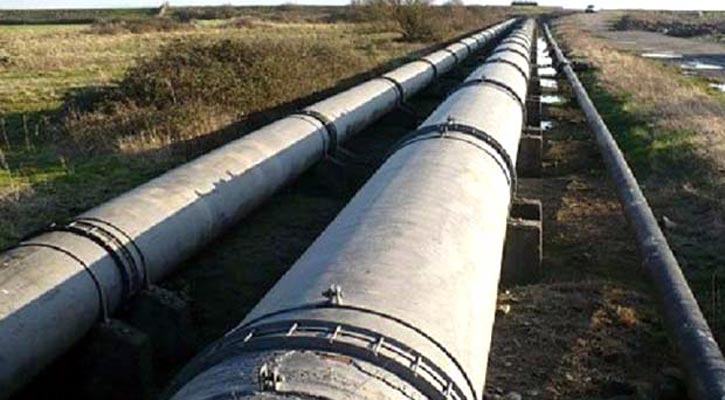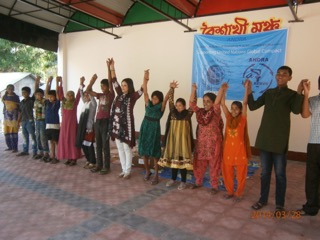The anger over water scarcity is palpable at a farmers’ protest in Dharodi village in the northern Indian state of Haryana. Thousands of protesters from several villages have been demanding clean drinking water for nearly a month and half now.
Rajpati Banwala throws her hands up as she chants slogans, demanding water with hundreds of other women and men under a huge tent.
“Even our livestock cannot drink the water the government gives us twice a week,” she says, adding that she has been spending 500 rupees ($7; £6) a month to buy drinking water.
Neelam Dhindsha, who was also at the protest, says she cannot even afford to buy water. “And there are many villagers like me,” she adds.
“That is why I have been joining the protest even if that means that I have to wake up much earlier in the morning to finish my household chores and farm work.”
Their struggle for water is not an isolated one.
India is one 17 countries where “water stress” is “extremely high”, according to an exhaustive new global report released on Monday. This means that the country is running out of ground and surface water.
According to this database compiled by the World Resources Institute, a US-based think tank advocating sustainability, India ranks 13 among the 17 worst affected countries – a list that includes countries where large swathes are deserts such as Saudi Arabia.
The report also ranks nine Indian states and union territories as having “extremely high” water stress. Haryana is among the worst hit.
Punjab, Rajasthan, Uttar Pradesh, Chandigarh, Gujarat, Uttarakhand, Madhya Pradesh, and Jammu and Kashmir are the others. They all scored between four and five on scale of zero to five, with five being the worst.
Authors of the report told the BBC they had calculated “water stress levels” by dividing the total available water by the volume withdrawn. In India, they found that, on average, more than 80% of the available ground water had been withdrawn – and some 70% of it was used for agriculture.
India is in the grip of acute water scarcity by other measures as well. Large parts of the country have already faced a crippling drought this year – more than 500 million people living in at least 10 states were reportedly affected. And India’s sixth largest city – Chennai in the south – ran out of water last month. In fact, the report counts the crisis in Chennai among the world’s many urban water crises in recent years.
The water table is also being depleted in Haryana’s neighbouring state, Punjab. It’s known as the breadbasket of India, but farmers are worried.
Narendar Singh, a young farmer, watches in anxiety as a borewell he recently installed digs deep for groundwater.
He says that, over the years, the borewells have become deeper. The first time his family installed one, he says, they dug up to 45.7 metres (150 ft) underground before they found water. Ten years ago, they had to double the depth.
“Now we have to dig up to 153 metres to access ground water,” he says.
“Soon there won’t be even drinking water, forget water for agriculture. I am so worried.”
Elderly citizens in Punjab and Chandigarh showed us several locations where ponds and wetlands had been eaten up by rapid urbanisation.
“There are nearly 140 development blocks in Punjab and most of them are in a ‘dark zone’, which means you cannot recharge the depleted groundwater,” said Devinder Sharma, a food and water expert based in Chandigarh.
“India’s per capita demand for water has been increasing over time,” says Raj Bhagat, an expert who was part of the team that published the report.
He says the demand has increased across domestic and industrial sectors, as well as for irrigation, leading to severe water scarcity. This is supported by the government-run Central Water Commission’s data, whose report from two months ago says there are more than 20 million borewells pumping out ground water across India.
India’s water scarcity, according to the report, stems not so much from a deficit, but from severe neglect and a lack of monitoring of water resources.
But it warned that continuing neglect would only worsen the situation.





















